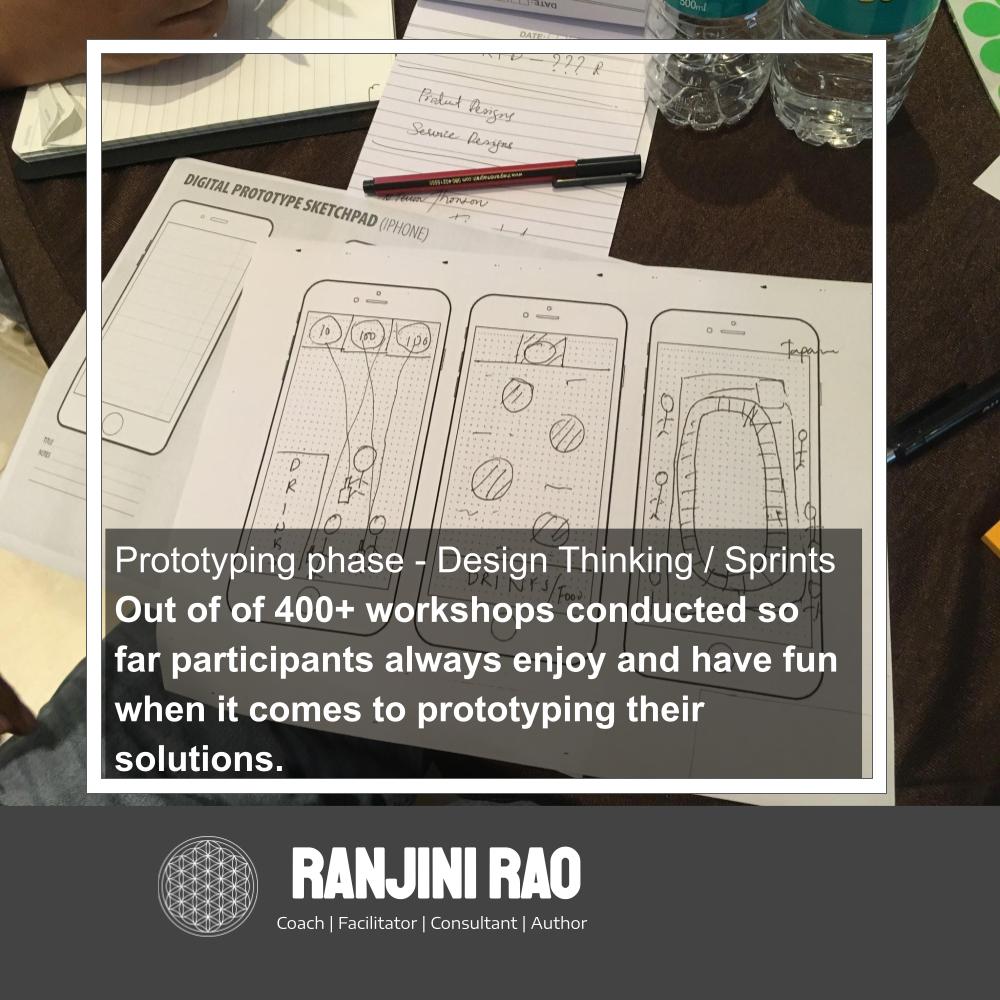Prototyping phase in Design thinking/Sprints
By far one of my favourite sections in Design thinking workshops is the Prototyping phase -where participants/Cohorts learn to build solutions with their hands .They sketch , they create 2D/3D models and have fun.

Why this is the most engaging and rewarding phase of the workshop?
It’s because as designers or participants they have been working right from their vision or goal to identifying stakeholders to creating Empathy Maps, Persona Maps and Defining the Problem statement. Post which they generate multiple ideas and then come to a idea filtration methodology to prototyping ideas/solutions and testing the same with the users.
“For many designers, prototyping is where the fun begins. Sometimes the key to good empathy is sharing or co-creating a prototype with your users and getting feedback. Prototyping helps us learn, solve disagreements, and test hypotheses quickly and with minimal repercussions.”
Rapid prototyping is an iterative learning process that acquires and expresses increasingly complex information of higher fidelity over time through repetitive and cumulative cycles of build, test, see, and refine.
Prototypes are traditionally used in design and engineering environments, but when they become integral to other organizational cultures, they serve to develop a creative mind-set that is able to effectively focus on imagining, socializing, and testing any idea, including work processes, team structures, business models, and, of course, products and services.
Because every output of design thinking begins as a prototype, think of them as part of a culture and not specifically as a tool.
Prototyping is the way to open up that dimension; it’s a relatively low-cost, hands-on activity that helps bring people on to the same conceptual page, uncover new knowledge, and identify and mitigate design and development risks early on. This is done to avoid downstream costs while also building up critical assets for the internal and external communication and socialization of ideas. As part of the hands-on approach, prototyping typically seeks to involve and engage multiple stakeholders and so-called end users as participants at every stage of iteration, from paper to final production.
The next time you are stuck and needing to apply your ideas / solutions in a practical manner and invalidate assumptions – Apply prototyping and see what could happen!
Sources: Ideo.org
Design Thinking Handbook
Invision : Rapid Protoyping



Recent Comments